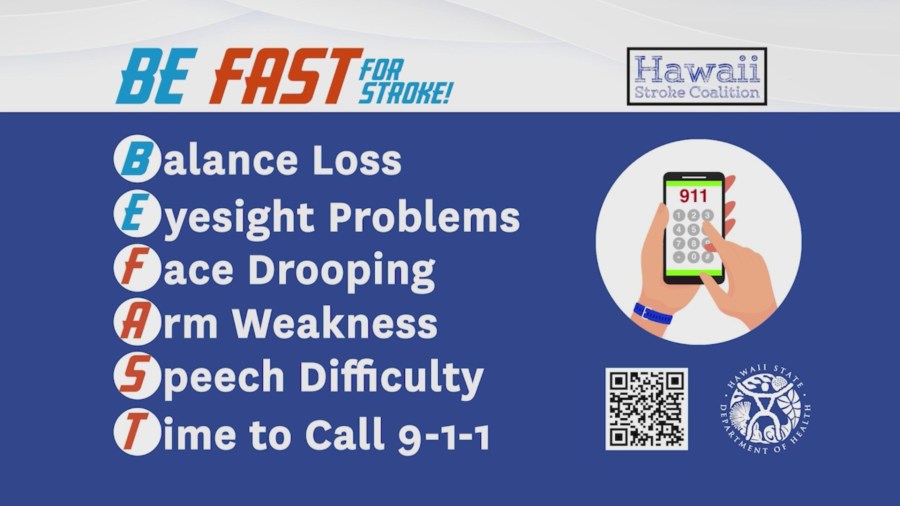Stroke care has long been a race against time, but recent innovations are changing the game, with interventions beginning even before patients reach the hospital doors. Dr. Matthew Koenig, a renowned neurologist, and Florlyn Taflinger, Program Manager at the Department of Health, Hawaii, joined John Veneri on Living808 for tips and information on stroke care.
The key focus of the segment is the pivotal role of ambulance services in initiating stroke care. Dr. Koenig emphasizes that stroke treatment commences the moment a call is made to 911. Paramedics, equipped with telemedicine technology, collaborate with stroke specialists to assess patients remotely. This innovative approach ensures that crucial steps in stroke care, such as identifying the type of stroke and initiating appropriate treatment, begin promptly, even before reaching the hospital.
Dr. Koenig underscores the significance of early intervention, stressing the critical importance of restoring blood flow to the brain within 90 minutes of symptom onset. With advancements like clot buster medications and minimally invasive procedures, the window for effective treatment is widening, offering hope for improved outcomes and higher rates of complete recovery.
Moreover, Florlyn Taflinger shed light on statewide initiatives aimed at tackling the burden of stroke. Through the Paul Coverdell National Acute Stroke Program, Hawaii is bolstering its stroke system of care, from pre-hospital interventions to rehabilitation and follow-up care. Public awareness campaigns, spearheaded by the Department of Health and the Hawaii Stroke Coalition, educate communities on recognizing stroke symptoms and the urgency of calling 911.
A crucial aspect discussed is the BE FAST mnemonic, simplifying the recognition of stroke symptoms: Balance loss, Eyesight problems, Face drooping, Arm weakness, Speech difficulty, and Time to call 911. Additionally, Taflinger outlines key risk factors for stroke and emphasizes preventive measures, including lifestyle modifications and managing underlying health conditions.
Finally, Honolulu Emergency Medical Services Assistant Chief of Quality Assurance Korey Chock outlined some important keys when initiating a call to 9-1-1 and speaking with a dispatcher.
The integration of telemedicine technology into ambulance services and concerted efforts to raise awareness are revolutionizing stroke care in Hawaii. By leveraging early intervention and community education, stakeholders are forging a path towards better outcomes and reduced stroke-related disabilities. As the adage goes, time is brain – and these initiatives are saving both.
For more information visit https://hawaiistrokecoalition.org
